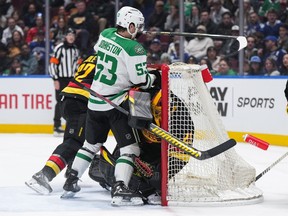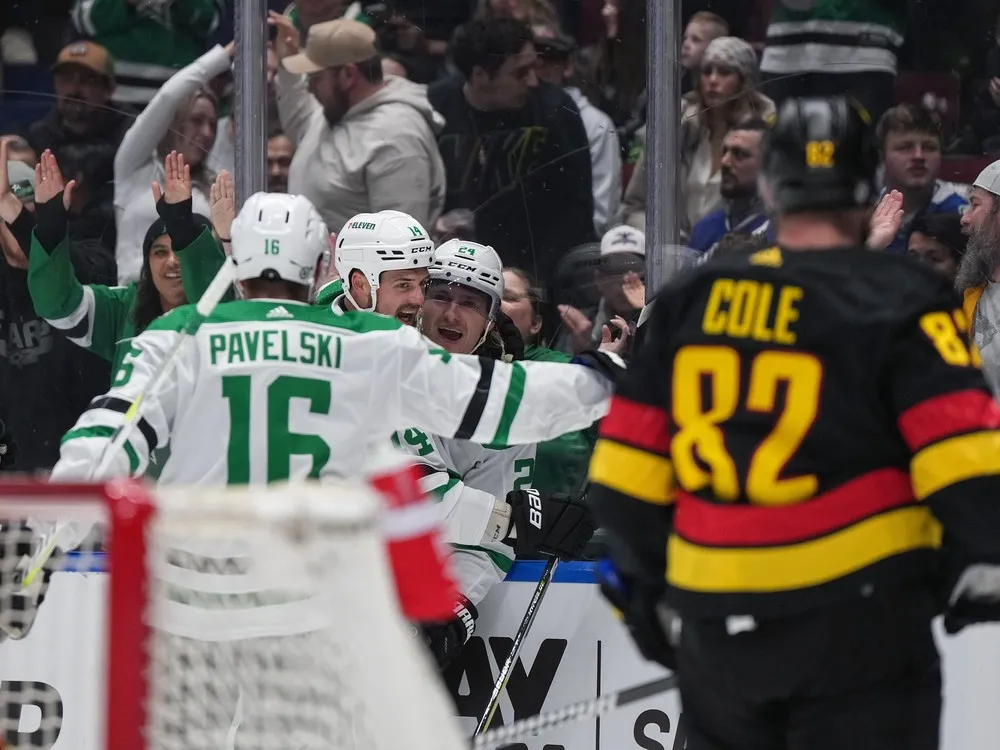
Take last season: total goals per game remained consistent from the regular season to the playoffs, with clubs averaging 3.14 goals per game.
However, the distribution of those goals changed, with power play goals increasing as a percentage of total goals scored from 20.7% to 23.1%. Part of the story is that power plays increase slightly early in the first round.
Writing for The Athletic last year, now-Pittsburgh Penguins statistics analyst Cam Charron discovered that power plays increased by 17% during the first four games of the first two rounds of the playoffs.
You know instinctively that this means postseason power plays have a lot more leverage. Winning games in the playoffs is precisely the purpose, and winning games early in the series, by definition, boosts your chances of winning the series overall.
Article content.
As the Vancouver Canucks prepare for their first playoffs in four years and their first home playoff games in nine years, improving their power play is an absolute must.
The Dallas Stars’ contentious goal on Thursday, which came shortly after Jason Robertson was not whistled for high-sticking the puck, was a perfect illustration of what the Canucks haven’t been doing recently, Brock Boeser said Saturday after practice at Rogers Arena.
And the sequence that followed was exactly what Vancouver needs more of: lots of slick passing back and forth, across the defensive box, which got the Canucks’ penalty killers moving and under pressure. Then the Stars got the puck to the net, where Roope Hintz banged it in from next to the crease.
“See like right out of there, they do keep the puck in and right after that boom, they move the puck quick. They knew their next play. They take to the net. Goal. Greasy goal,” Boeser said.
Retrievals, he said, are everything.
“It just comes down to you know, shooting the puck and getting guys around the net and really digging in,” he said. “But also it’s puck retrievals. I think right now our puck retrievals haven’t been, you know, at our best as of late and we’ve got to get better in that aspect.”
Since the beginning of February, the Canucks’ power play has scored on just 14.5 per cent of their opportunities, the fourth-lowest success rate in the entire NHL.
That’s a stunning decline. Before the All-Star break, the Canucks were scoring on exactly 25 per cent of their power play opportunities, good for eighth-best in the NHL.
Boeser’s linemate J.T. Miller and head coach Rick Tocchet both spoke in similar terms after Thursday’s 3-1 loss to Dallas.
The Canucks had three power plays against Dallas, but came up empty. The conference-leading Stars won because they scored twice on the man advantage, as stark a contrast as you can find about the importance of special teams in the playoffs, without being in the playoffs.
“Less mechanical,” was Tocchet’s short answer on Thursday night about where he wants his power play to go.
Tocchet has proven to be a master of motivation this season, knowing how and when to speak with his players. The power play has been on his duty list as well and while it was humming early in the season, it’s not been since the All-Star break.
J.T. Miller’s diagnosis is similarly simple: more energy.
“Not enough momentum for the group. We’re not getting any loose pucks back. I just feel like we’re playing slow,” he said Thursday, after the Canucks’ power play once against sputtered against a playoff-quality opponent.
From the beginning of the season through the All-Star break, the Canucks were firing 113.7 shot attempts at the opposing goal per hour of power play time, the 9th-highest rate in the NHL.
Since then, the shot rate has declined to 105.3 attempts per hour, which is 20th overall. That’s slightly up from recent weeks; at one point the Canucks’ shot rate was down 20 per cent.
So, at least they’re starting to shoot more again, but the problem is deeper, Tocchet argued.
“We need a little bit more you know, taking pucks to the net. Or a backdoor play, or it’s a one timer from the point with traffic,” he said.



